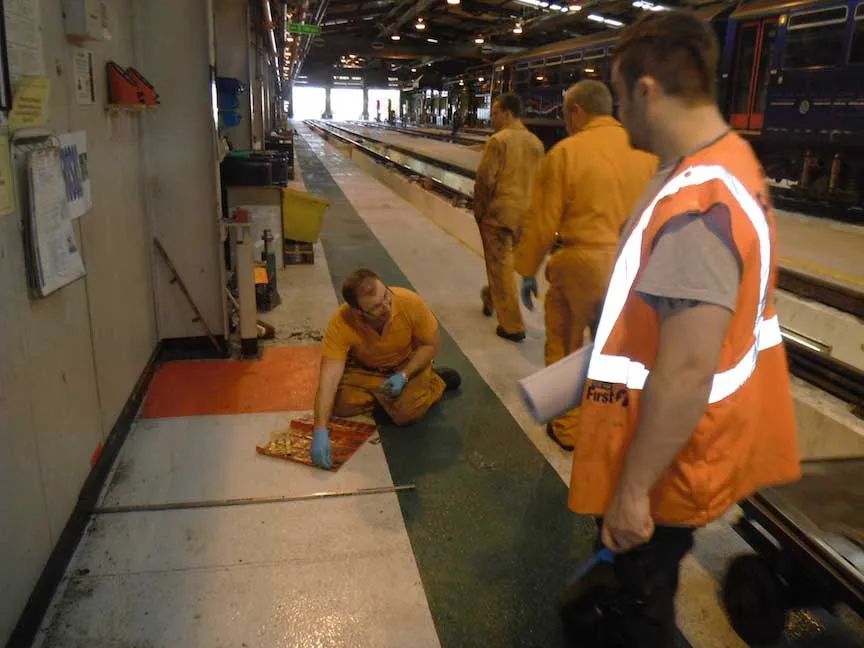Why Lean Six Sigma is a fundamental resource for Rail Engineering
Rail engineering plays a major part in the UK rail infrastructure and it faces many demands. There are many issues such as train delays, long lead times, high operational costs, poor maintenance efficiencies, poor controls and policy compliance, inadequate customer service levels, insufficient cash flow and low levels of regulatory compliance to name just a few! Combine these with a lack of structured approach to improvement and a lack of capability in Lean Six Sigma methodologies and alarm bells should be ringing! Therefore, you can bet that Lean Six Sigma will be a sure-fire fit in helping you fix these issues and sustain improvements across all areas to place yourselves firmly in front of your competitors.

Lean Six Sigma
Over the last several years, Lean Six Sigma has become a ‘buzz saying’. The point to be considered here is that Lean Six Sigma methodology has served diverse customer bases. These bases are across different sectors and have proven to deliver a host of benefits. Remember, Lean Six Sigma is a business initiative aligned to the key strategies of the business. It is a way of doing business that improves quality and productivity. Above all, it also increases competitiveness & reduces cost as well as creating a positive learning environment. The ethos of ‘Lean’ involves identifying errors and minimising them, whilst Six Sigma gives you the skills and tools to understand how to achieve this, ensuring consistency is embedded within any streamlined process changes.
Lean Six Sigma can be instilled across all staff levels in a business, from maintenance staff to senior management through the new Improvement Standards apprenticeships. These cover qualifications such as Improvement Technician (Yellow Belt), Improvement Practitioner (Green Belt), Improvement Specialist (Black Belt) and Improvement Leader (Master Black Belt). Regardless of your industry or size, Lean Six Sigma provides a standard approach to problem-solving in terms of improvement projects undertaken which are aligned to key business strategic objectives.
We design robust training programmes across all levels of the business to achieve large-scale transfer of knowledge and skills. In the process, we identify projects and implement a wide range of performance improvements. We combine this with accelerated deployment of new policies and procedures through direct support in delivering business change projects. Finally this is followed by coaching support aimed at embedding this throughout the business.
Applying Lean Six Sigma to Rail Engineering
For most organisations involved in rail engineering, operational cost & risks are significant factors contributing to low profits or even losses. Some risks cannot be eliminated and operational cost is always omnipresent. Lean Six Sigma can provide a road map that can drastically reduce your exposure to risks, consequently making you more efficient & effective at delivering the primary service.
For example, an improvement project on cost-reduction would be associated with decreasing turnaround time on rail engineering schedules. The result is a standardised process with fewer touchpoints, hand-offs, non-value-adding activities and unnecessary rework. All of which will reduce the cost for the company in terms of hard or soft savings. Hard savings are actual reductions in pounds being spent. For instance, reduced budgets, fewer employees, reduction of prices paid on purchasing are a few examples of hard savings. Soft savings are projected reductions that should result from the project. For example, savings from less inventory, lower turnaround times and increased levels of staff optimisation.
Additional benefits may gather by consistently meeting or exceeding service-level agreements (SLAs) with customers which will avoid penalties and recognise revenue faster.
Furthermore, Lean Six Sigma projects can help improve accuracy by reducing Defects-Per-Million-Opportunities (DPMO) across the value stream in the process. The word ‘opportunity’ means the chance to commit an error. DPMO is a probabilistic measure of error rate or capability of a business or manufacturing process. This measure considers both actual defects & number of probable defects in every opportunity. According to the Six Sigma methodology, the process which is in a state of statistical control is the stable process. With the help of graphical & statistical process control (SPC) tools such as Control and Run Charts, Lean Six Sigma projects will help track and monitor the stability of the process on an ongoing basis.
Lean Six Sigma tools & techniques help assess deviation from the plan, forecast and manage expectations. In addition these techniques help determine if customers comply with the Service Level Agreements (SLAs) which is an essential element of the engineering maintenance schedule.
Compliance
There are generally three aspects of regulatory compliance which all have high focus and interest in the rail engineering sector. The first one is finance and audit, the second one is information technology, and the third one is legal. Lean Six Sigma projects can be undertaken in each of these aspects; depending on the kind of problems identified. Firstly, under the umbrella of finance & audit, improvement projects can aim towards improving the fund allocation process or reducing the turnaround time in the cost estimation process. In the area of information technology, a project can aim towards reducing the risk of non-compliance. Finally, in the case of legal, a Lean Six Sigma project can aim towards improving documentary and auditory compliance. This is a real key area for all rail engineering organisations due to the safety critical work involved, especially the compilation process of critical and non-critical documents.
The Journey
In conclusion Lean Six Sigma is a journey. Along the way, you will begin to experience transformation & excellence. After completing rounds of improvement projects in multiple critical & non-critical functions, the newly developed organisational culture will embed that philosophy and culture into everyday practices. Lean Six Sigma will help management to develop empowered employees that identify and drive improvement ideas on a far more regular basis. This is truly a sure-fire way of keeping ahead of your competitors. Do not wait for the right opportunity, create it now and start your Lean Six Sigma journey. The benefits are shown to be advantageous and overall, show that Lean Six Sigma is an excellent resource for the rail engineering sector.
Share this
You May Also Like
These Related Stories

Lean Six Sigma Black Belt Vacancy

How Lean Six Sigma Can Set The Service Industry Up For Success



No Comments Yet
Let us know what you think